
Garibaldi street (Via Garibaldi), the full name of the street Giuseppe Garibaldi (via Giuseppe Garibaldi Via Giuseppe Garibaldi) is one of the main and most visited street in the historic centre of Genoa, famous for its luxury palaces of the Renaissance.
In 2006, via Garibaldi, a UNESCO world heritage site.
Via Garibaldi was founded by the Genoese aristocracy during the Renaissance, and refers to the so-called "New streets" (Strade Nuove).
The structure of the street originates from 1550 and was designed by architect of the municipality of Genoa Bernardino Cantoni in what was then a new housing area for the great and wealthy Genoese families wishing to leave the medieval streets of the city.
Originally the street was named Strada Maggiore (strada Maggiore), then Strada Nuova (strada Nuova), to the nineteenth century it was known as via Aurea (Via Aurea). Madame de Stael attributed to her more famous name: Rua (Rue des Rois), the way of kings. In 1882, the street was finally named after Giuseppe Garibaldi.
Today the via Garibaldi, famous for its exquisite historic buildings-palaces, where museums and galleries while others are banks and offices.
The length of the street Garibaldi is just about 250 meters and its width is equal to 7.5 meters. Stretches of the via from the Plaza Fountain Marose (Piazza delle Fontane Marose) and Meridian (Piazza della Meridiana), where smoothly flows into the via Cairoli (Via Cairoli).
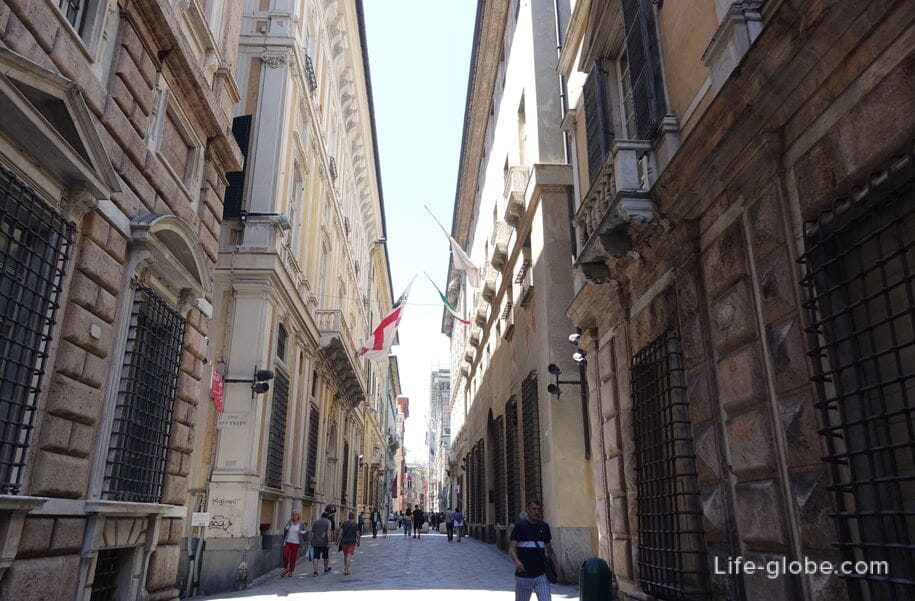
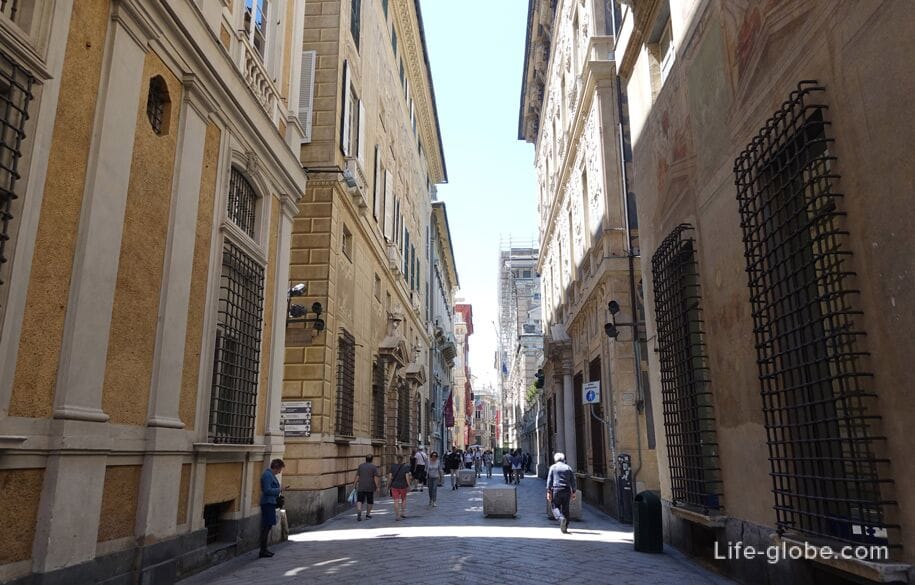
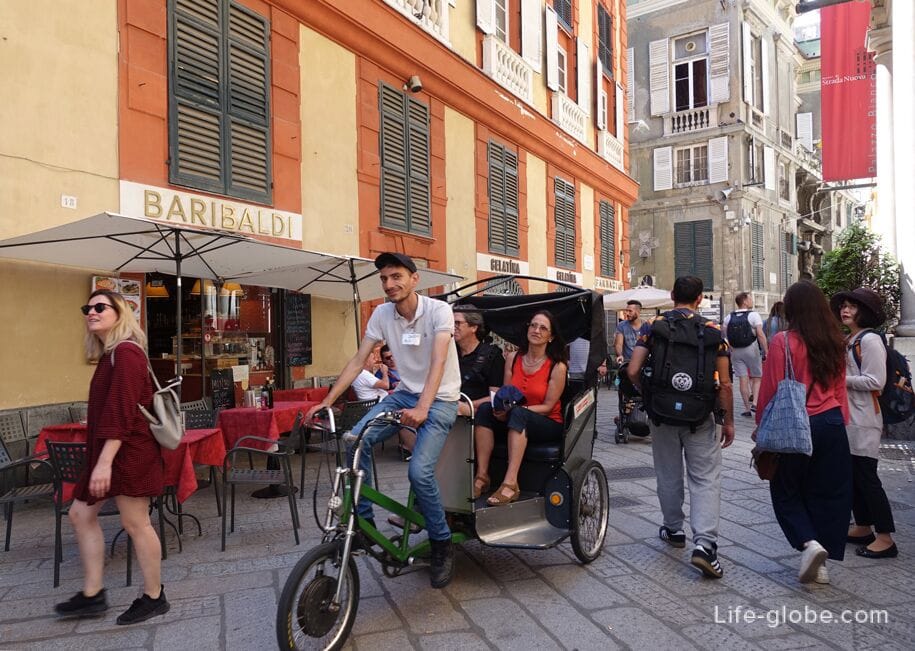
On Garibaldi street is especially notable for some of the most luxurious and elegant buildings in the city, the interiors of which are the original decorations of the greatest authors of the Genoese mannerism and Baroque.
Or the Palace of Agostino Pallavicini (palazzo Pallavicini-Cambiaso / palazzo Agostino Pallavicini) is located on via Garibaldi at number 1, was originally built by the project of Bernardino Cantone in 1558 by order of Agostino Pallavicini.
Currently the Palace belongs to the Bank UniCredit.

Or Gambaro Palace (palazzo Pantaleo Spinola / palazzo Gambaro), located at No. 2, was built at the same time as the Palazzo Cambiaso by architect Bernardo Spazio (which was later replaced by Pietro Orsolino) for Pantaleo Spinola.
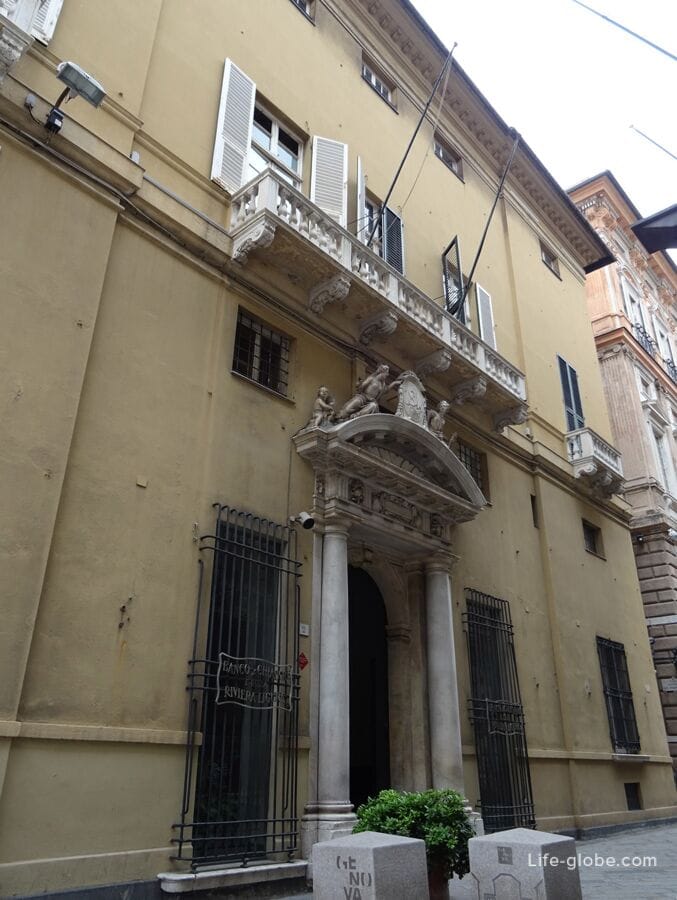
Or Franco Lercari Palace (palazzo Lercari-Parodi / palazzo Franco Lercari), located at number 3, is visually very different from the other buildings in the street Garibaldi.
The building was erected in 1571 by Franco Lercari, a rich banker who was Governor of the Genoese Republic in 1670-ies.
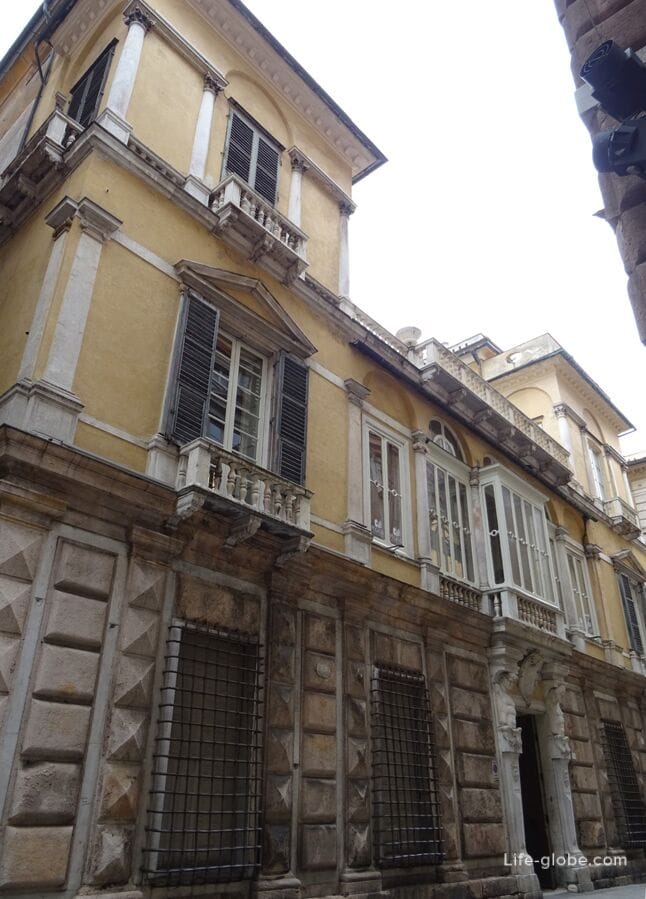
Or Tobia Pallavicino Palace (palazzo Carrega-Cataldi / palazzo Tobia Pallavicino) is at number 4.
The building was built between 1558 and 1561 for Tobia Pallavicino. The Palace has not undergone significant changes until the early 18th century. After the house passed into the possession of the family Carrega, was significantly increased.

Or just the Spinola Palace (palazzo Angelo Giovanni Spinola / palazzo Spinola) is at number 5.
The construction of the building started in 1558 for Angelo Giovanni Spinola and finished in 1576 by his son Giulio.
The facade is decorated with frescoes.
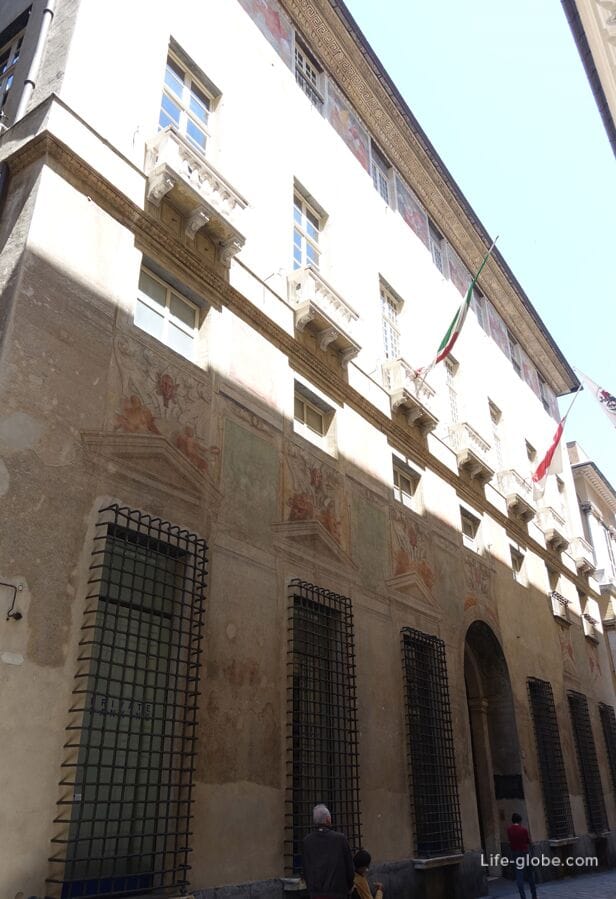
Entrance hall with high ceilings, rich fresco decoration depicting allegorical figures and zodiacal signs. In the center of the ceiling is dominated by an octagonal mural, depicting the battle of Gherardo Spinola against the Florentines.
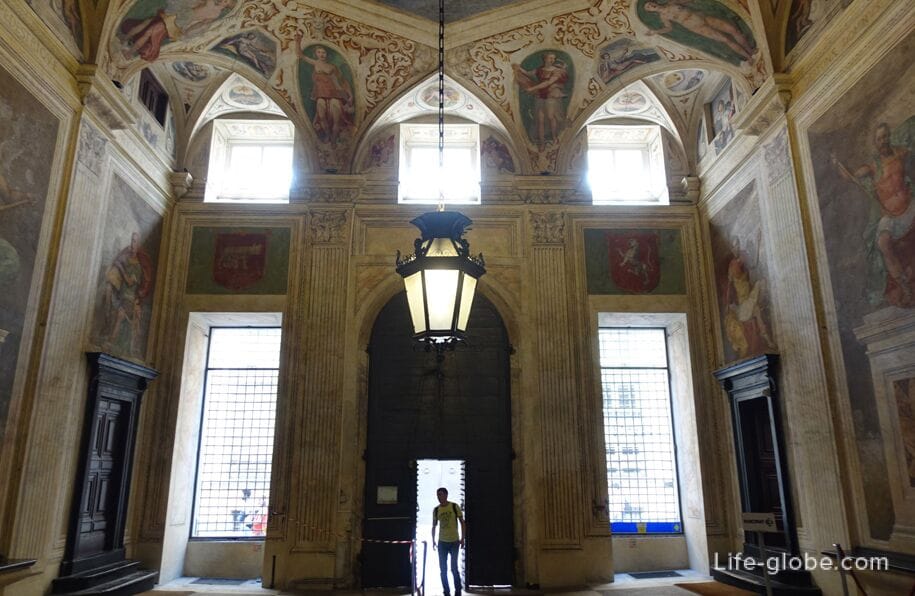
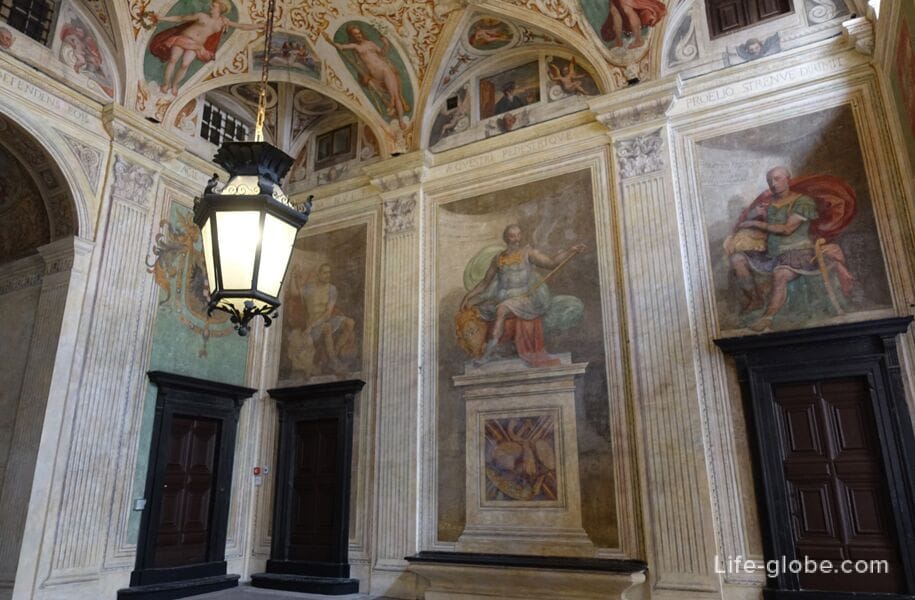
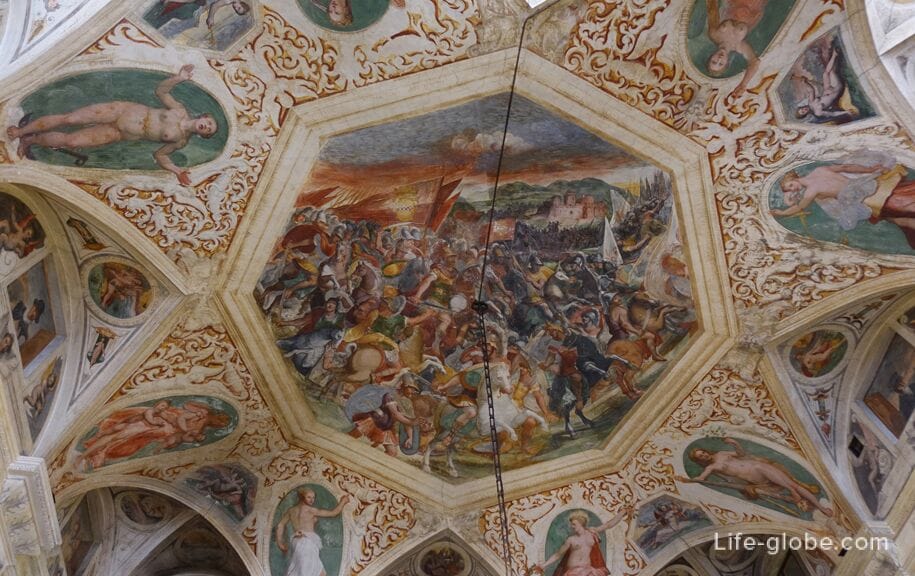
Or just the Doria Palace (palazzo Gio Battista Spinola / Doria palazzo) is at number 6.
The construction of the Palace lasted from 1551 to about 1557 years.
The Palace has undergone significant changes between the 17th and 18th centuries, when it was raised one floor and rebuilt the facade of the injured in the bombing of the French fleet in 1684. At this time the facade was given a modern stucco decoration with pairs of pilasters, interspersed with window boards.
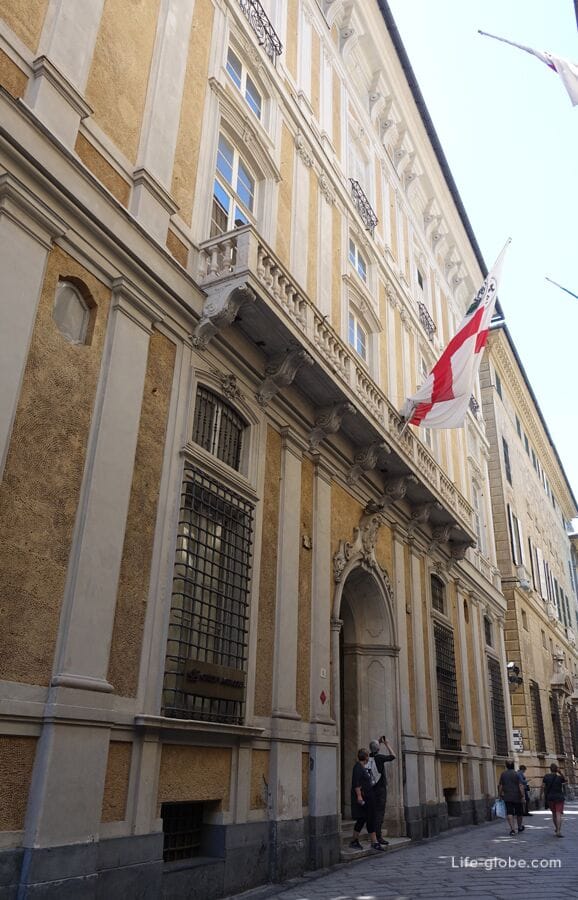
Or Nicolosio Lomellino Palace (palazzo Podesta / palazzo Nicolosio Lomellino) is at number 7 and is one of the most elegant buildings on via Garibaldi.
The building was built between 1559 and 1565 the years by Giovan Battista Castello known as the "Bergamasco," and Bernardino Cantone, at the direction of Nicolosio Lomellino.
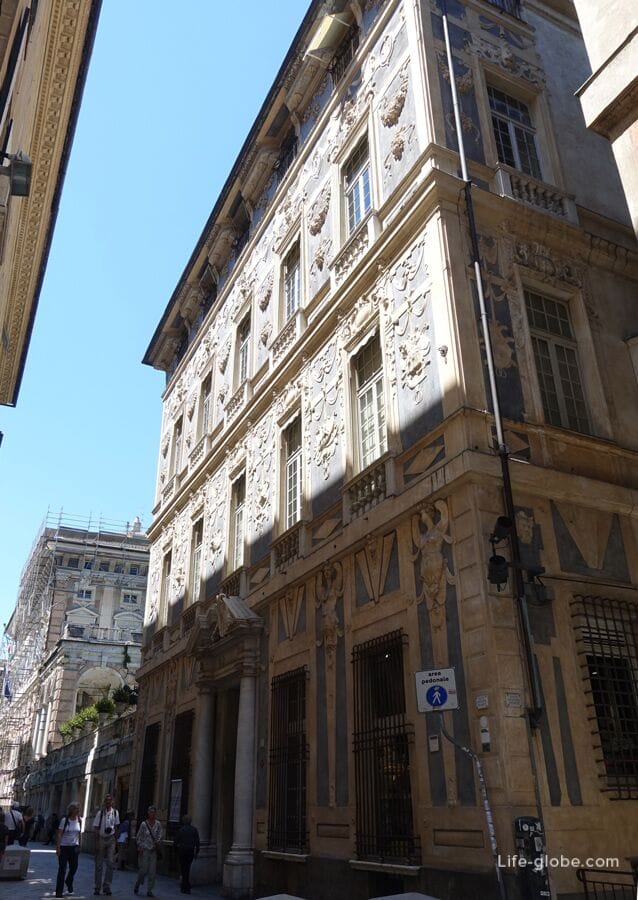
In the hallway of the Palace you can see lannie jewelry, beneficial eye-catching on the blue background.
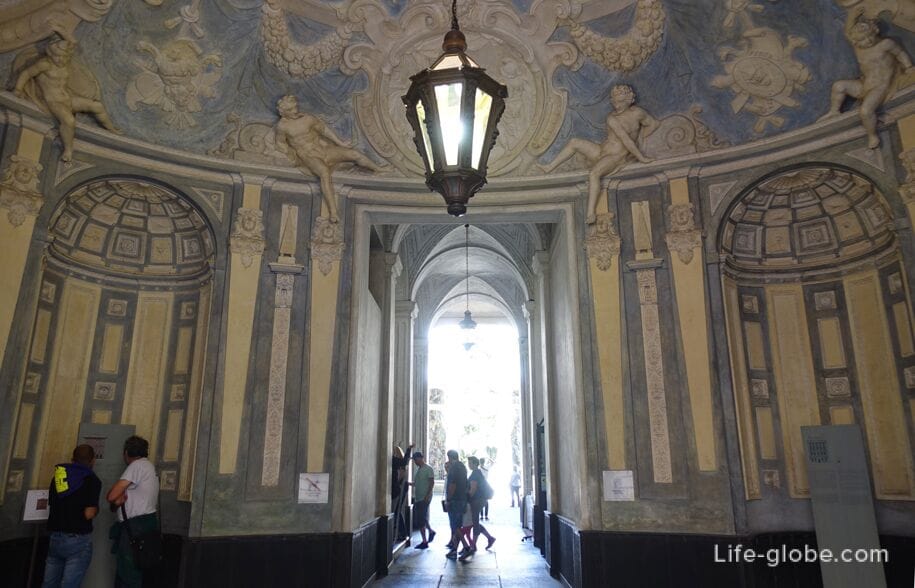
An outdoor patio, bordered on the sides with the rear wings of the building has terraces and a Nymphaeum, created in the eighteenth century, Domenico Parodi, combining architectural, sculptural and natural elements and which is the heritage especially bright tradition in Genoa that period.


Or the Palace of Lazzaro and Giacomo Spinola (palazzo Cattaneo-Adorno / e Lazzaro palazzo Giacomo Spinola) has two entrances and is marked by numbers 8 and 10, because it consists of two symmetrical, separate parts that make up a building.
The Palace was built between 1583 and 1588 years cousins of Lazzaro and Giacomo Spinola.
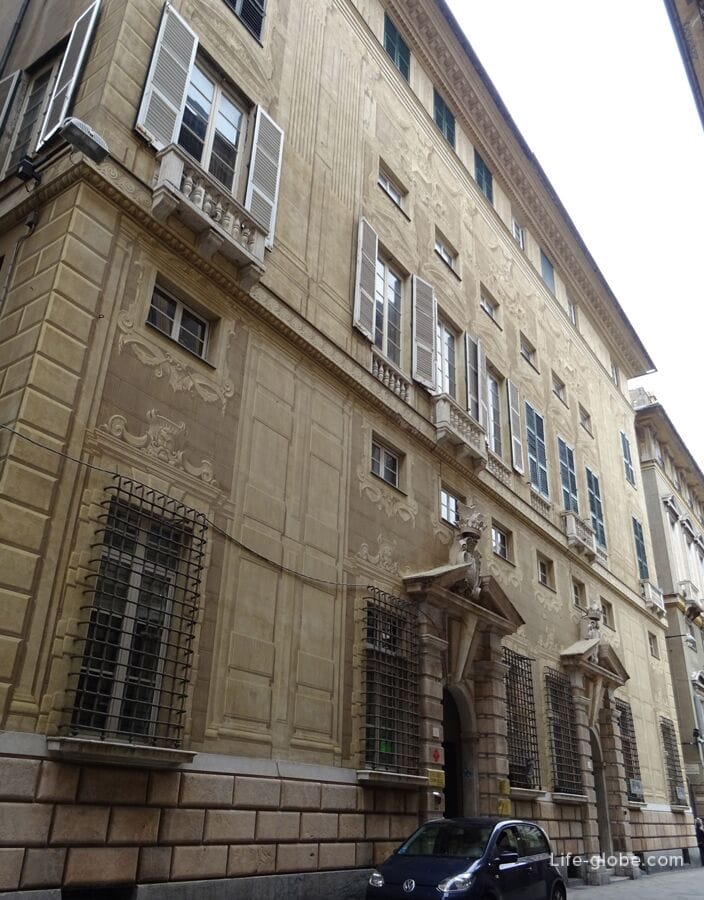
Or the Palace of Nicolo Grimaldi (palazzo Doria-Tursi / palazzo Niccolo Grimaldi) is located under the number 9 and represents the longest of homes on the Garibaldi street with two lateral loggias.
The building was erected in 1565 by the brothers Domenico and Giovanni Porcello for niccolò Grimaldi.

Or the Palace of Baldassarre Lomellino (palazzo Campanella / palazzo Baldassarre Lomellini), also known as the Palace of Cristoforo Spinola (Spinola palazzo di Cristoforo) is located at number 12.
The building was built from 1562 to Baldassarre of Lomellini project Giovanni Porcello.
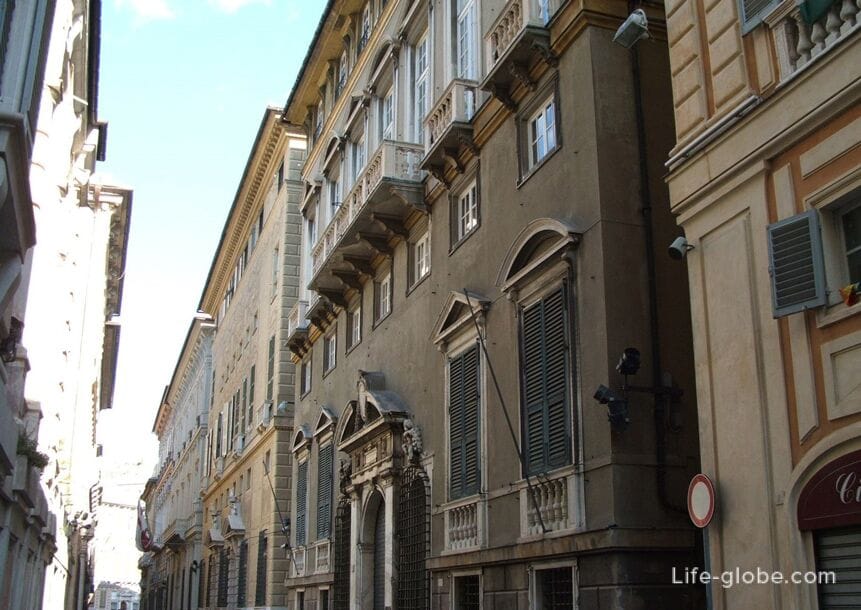
Palazzo della Torretta (palazzo delle Torrette), took two public places at numbers 14 and 16, and got its name from the two towers, which complement the side of the building.
The building was built later than the main part of the buildings on via Garibaldi, starting in 1716. Its design is designed by Giacomo Viano, on behalf of the Duke of tursi-Giovana Andrea Doria.

Palazzo Rosso (palazzo Rosso), also known as the Palace of Rodolfo and gio Francesco Brignole-Sale (palazzo Rodolfo e Gio Francesco Brignole Sale) - the most famous of the palaces on via Garibaldi.
The Palace is situated at number 18. Is one of relatively recent buildings in via Garibaldi takes its name from the characteristic Genoese red color which distinguishes it from other buildings on the street. The house was built from 1671 to 1677 years, according to the project of Pietro Antonio Corradi for the family Brignole-Sale.
Today, the building of the red Palace is part Museum, part Museum Strada Nuova (musei di Strada Nuova), which also included: Palazzo Bianco (room 11 via Garibaldi), Palazzo Doria-Tursi (No. 9 via Garibaldi). The collection of the Museum is mainly devoted to works of art Brignole-Sale, partially accommodated in the rooms where original furniture and decoration of past centuries.
Museum tickets can be purchased at the Palace Bianco. The cost of visiting the three parts of the Museum in three palaces is 9 euros, the audio guide is 5 euros. Opening hours of museums and the exact cost can be specified on the website.
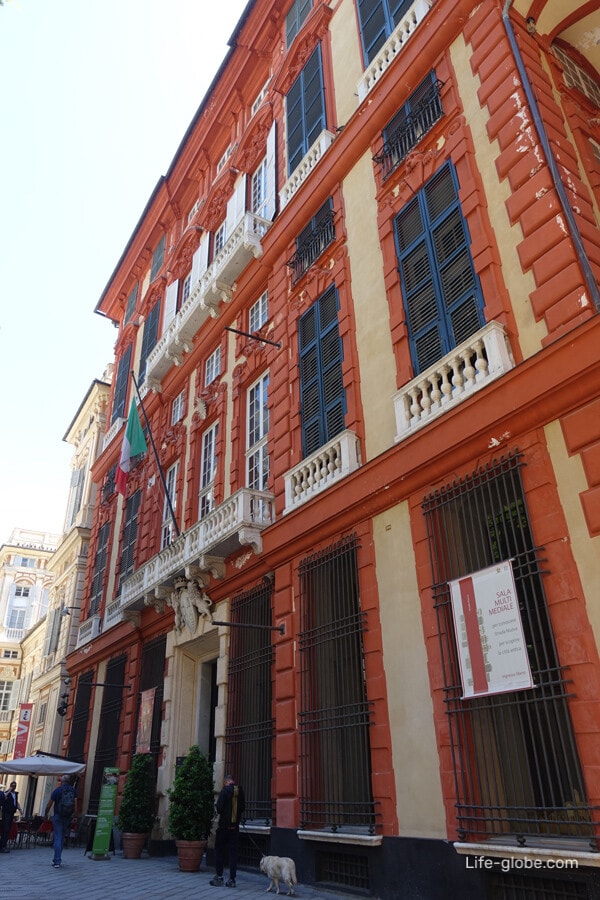
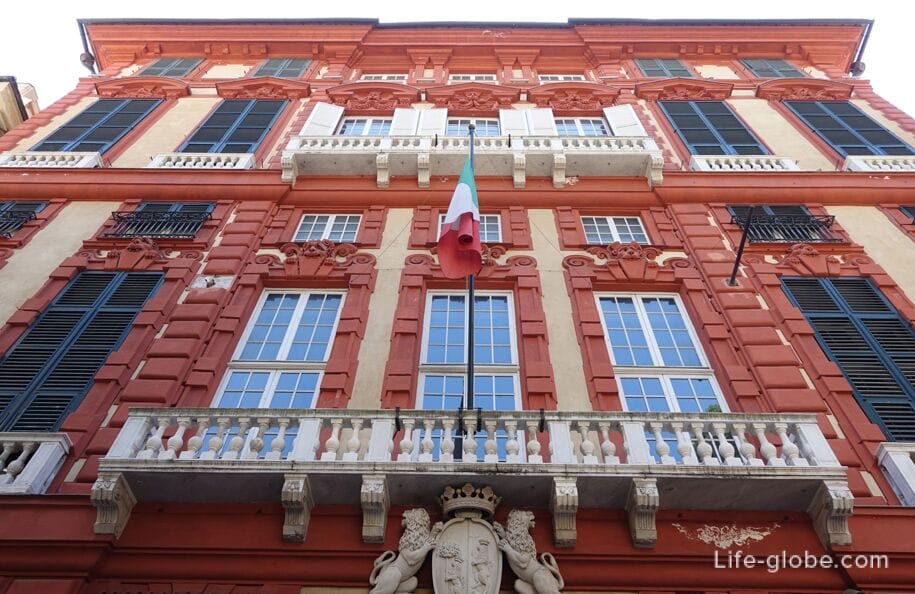
Or White Palace (palazzo Bianco), also known as the Bow Grimaldi Palace (Palazzo Grimaldi di Luca) is located in front of the red Palace at number 11.
The Palace formerly belonged to the same family as the Red Palace – Brignole-Sale. Was built between 1530 and 1540 years Lucas Grimaldi.
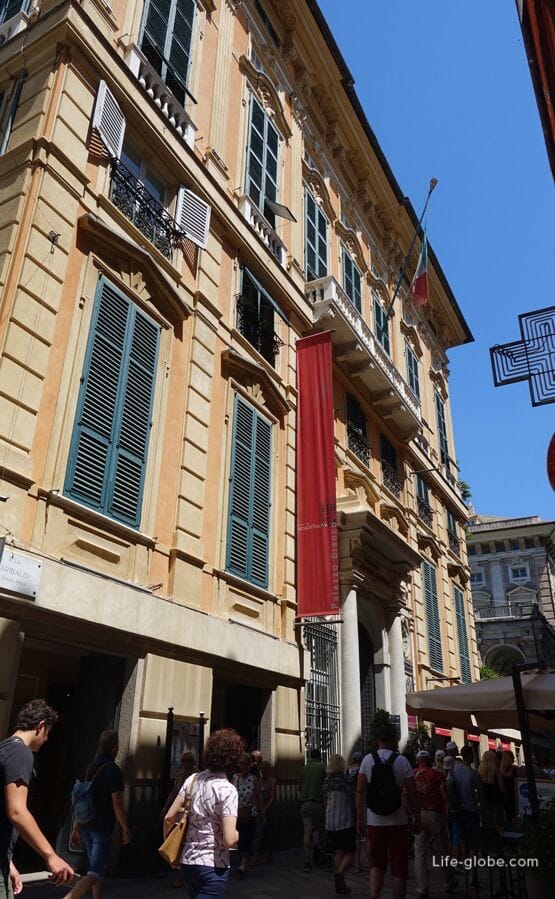

At the Palazzo Bianco via Garibaldi ends and in this place there is a small area of Meridian, built at the end of construction Street Cairoli (1778 - 1786 years) thanks to the agreement reached between the owners of two buildings located on the square opposite each other and which sites:
the Gerolamo Grimaldi Palace (palazzo Gerolamo Grimaldi), also known simply as Meridian Palace (palazzo della Meridiana) is located on the North side of the square and was vasudan between 1536 and 1544 years of Genoese banker Gerolamo Grimaldi Oliva, enriched in Portugal and Spain, where he managed the collection of taxes;
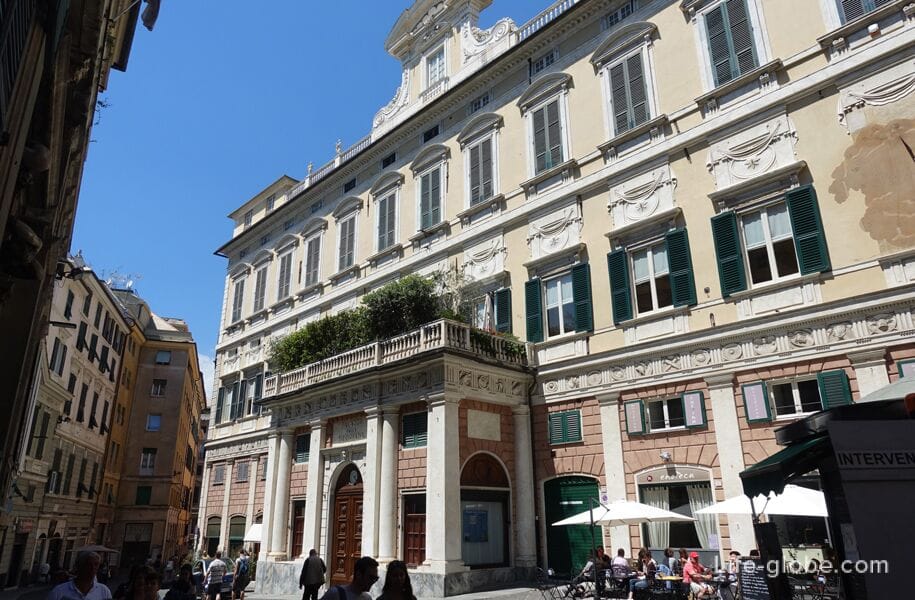
- the Palace of gio Carlo Brignoli (palazzo Gio Carlo Brignole), located on the South side of the square of the Meridian;
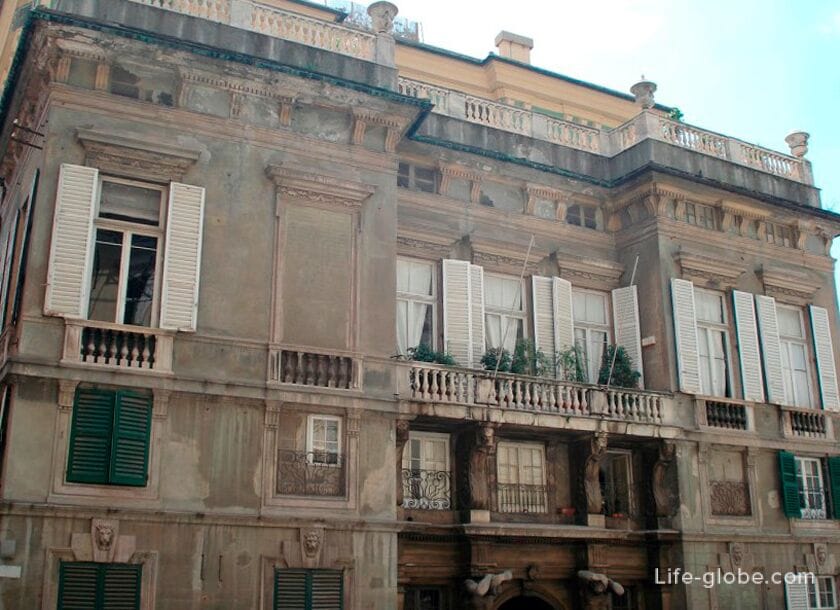
From the area of Meridian, in a North-westerly direction, leaves the via Cairoli.
This street, though less well known than Garibaldi, but no less exquisite and interesting. Along the street are beautiful historic buildings.
The street was named in honor of the 10th Prime Minister of Italy Benedetto Cairoli (1825-1889), was. Was built in the 18th century (between 1778 and 1786 years) architect Gregorio Petondi as "Strada Nuovissima" (Italian for "the new street").
Via Cairoli and via Garibaldi, 2006, included in the list of UNESCO world heritage site in Genoa.
The length of the street Cairoli is just over 200 metres. The street runs from the square to the Meridian Largo della Zecca (Largo della Zecca), located on the edge of the historic centre of Genoa.
Photo street Cairoli

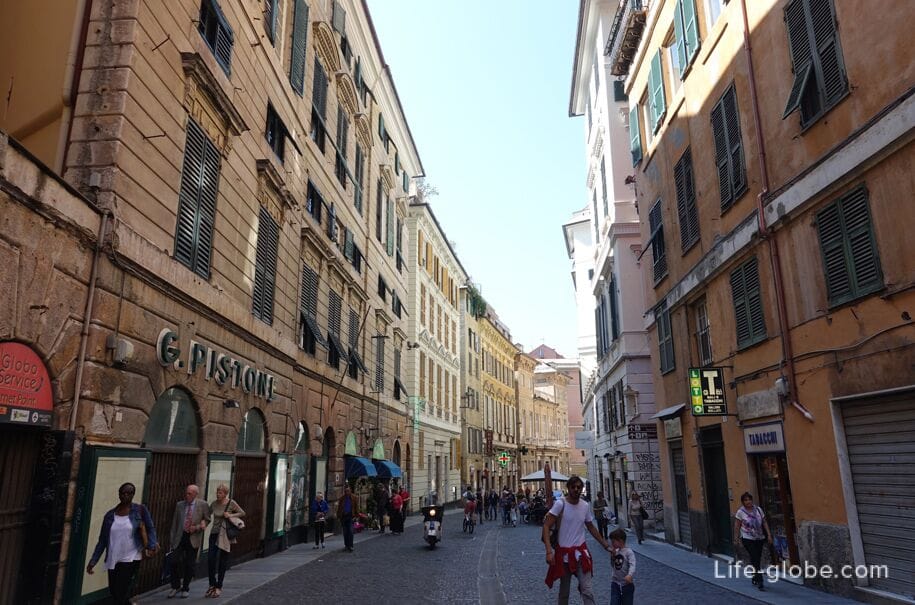
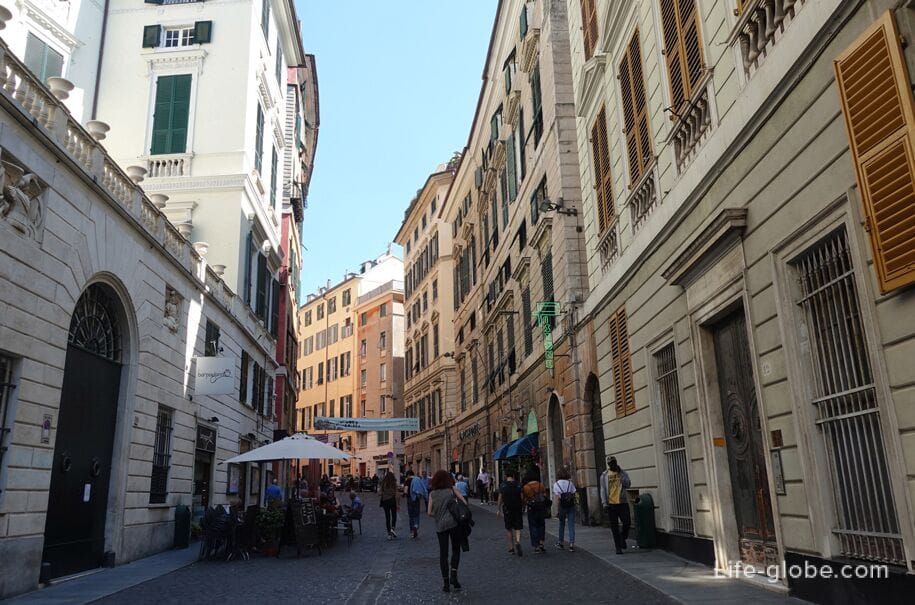
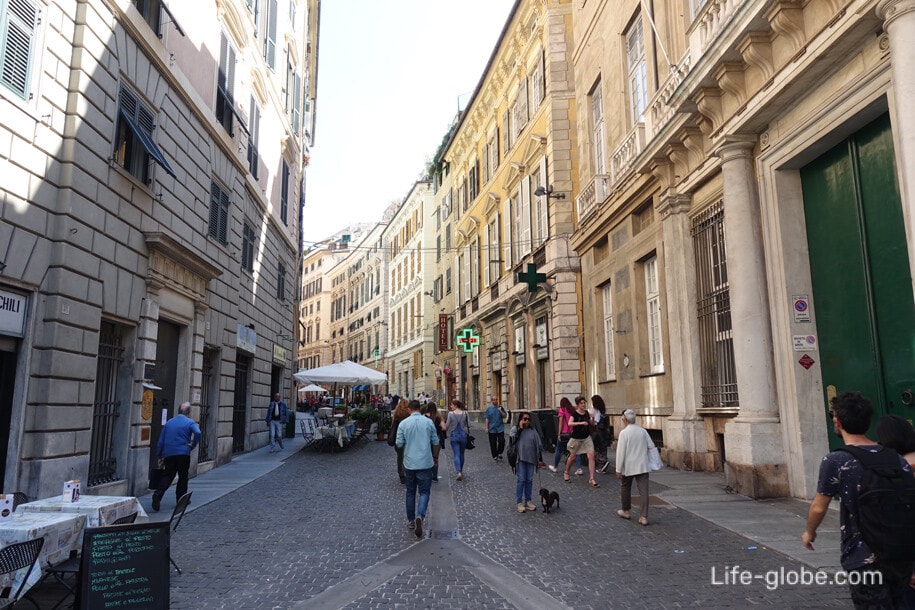
Photo Largo della Zecca
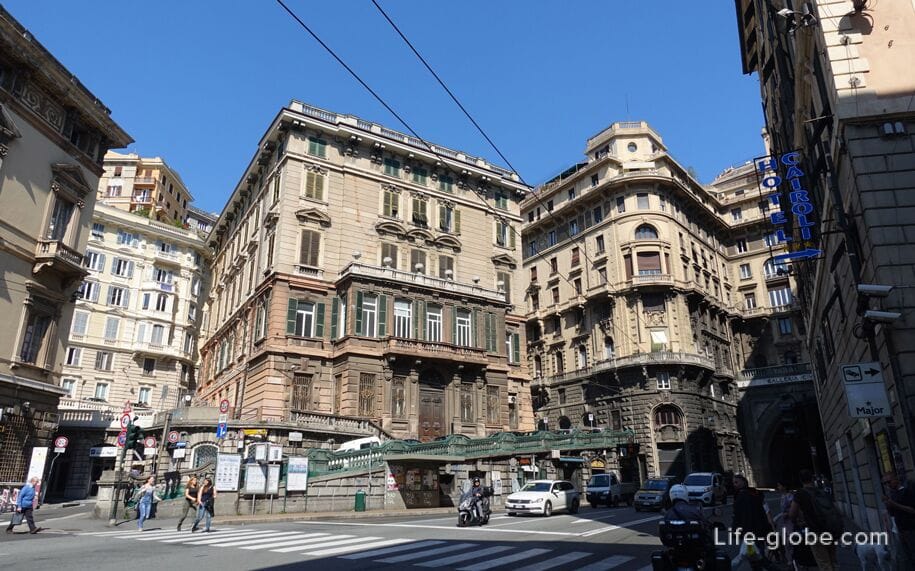

Currently, the Garibaldi, the area of Meridian street and Cairoli together represent one of the most popular tourist routes in Genoa.
Might be interested in the street Balbi (Via Balbi), located near the Cairoli street (just 150 meters), designed in the 16th century and is lined with several fine Genoese palaces. Read more about the street Balbi...
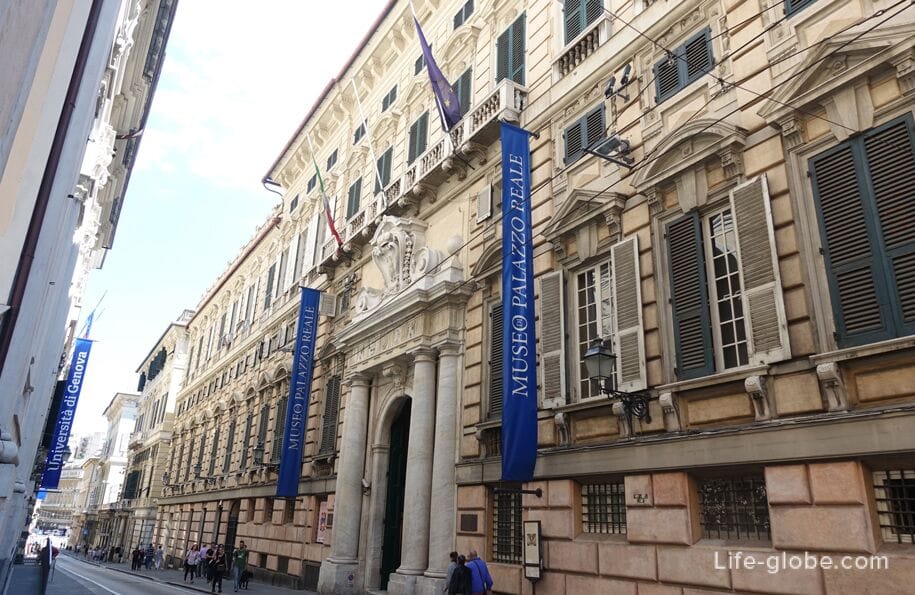
All accommodation facilities in Genoa, including in the city center, near the beaches and more remote from them, can be viewed and booked here